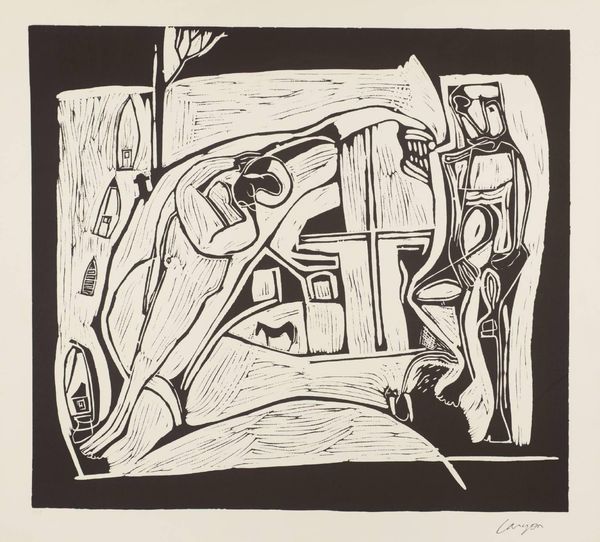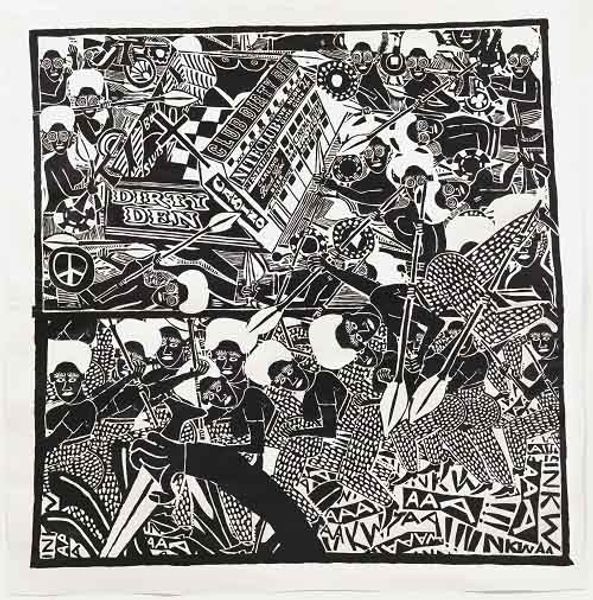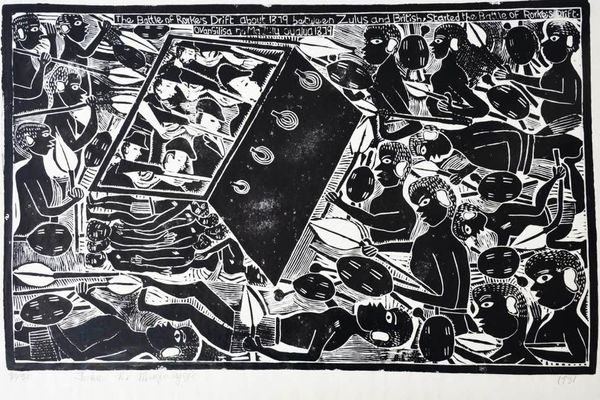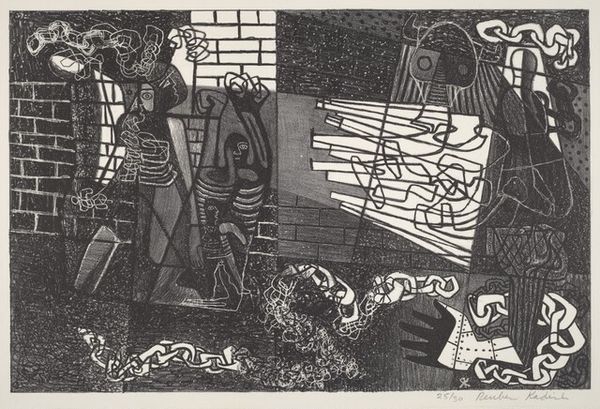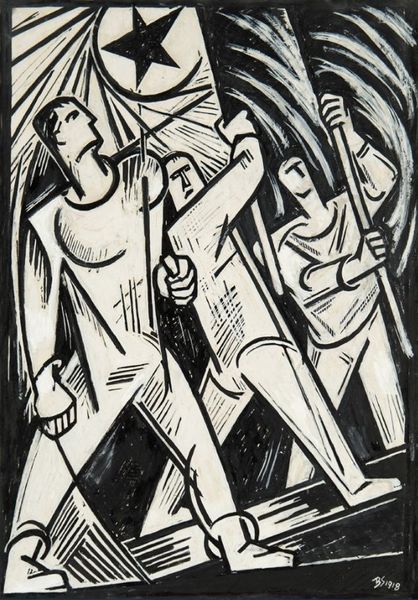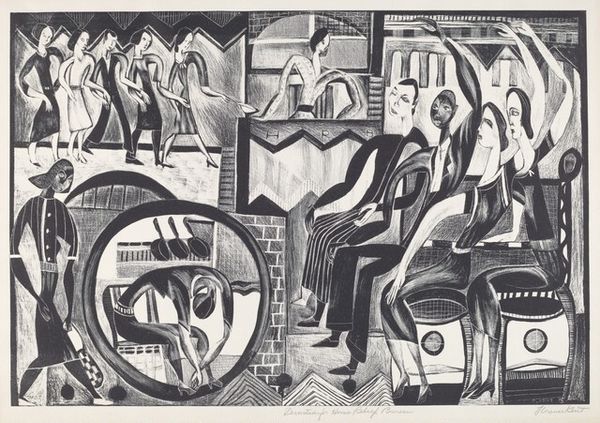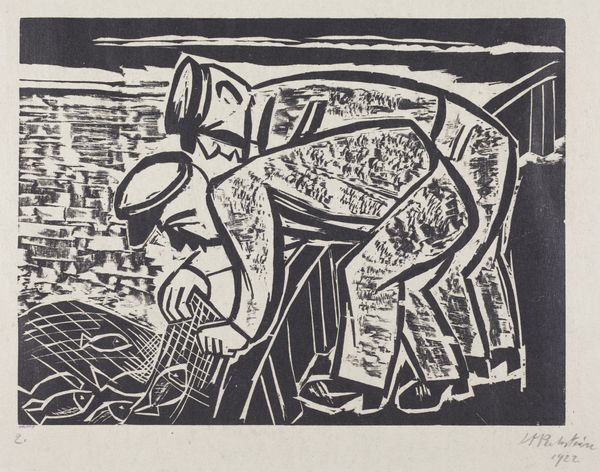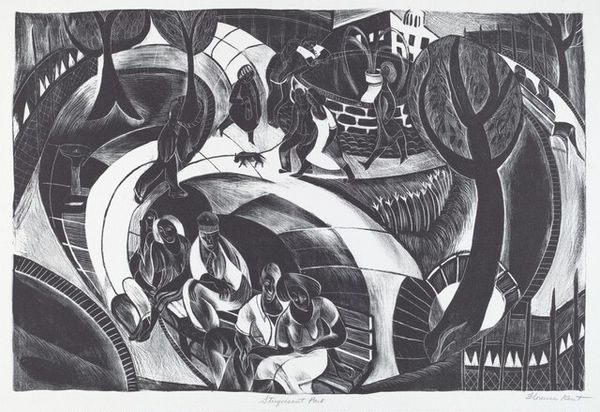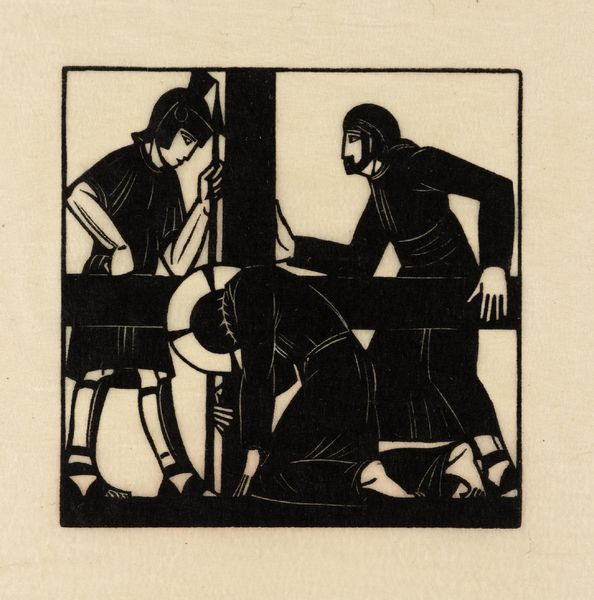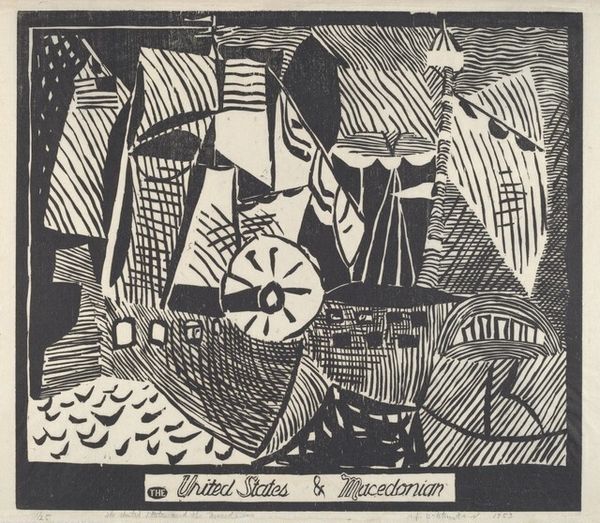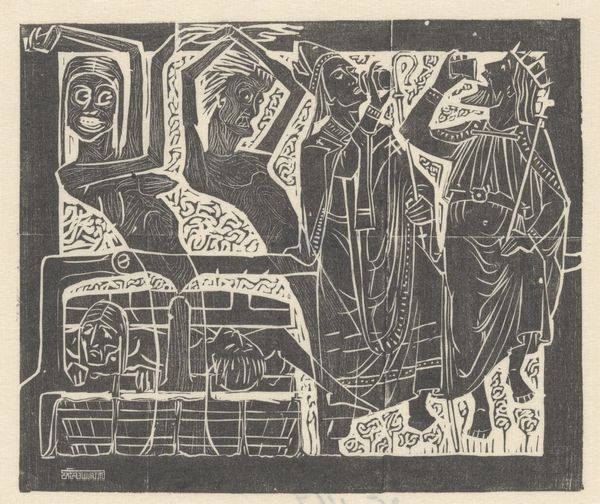
Dimensions: 86 x 61 cm
Copyright: John Muafangejo,Fair Use
Curator: Here we have John Muafangejo's woodcut, "Crucifixion," created in 1984. It's a powerful image, wouldn't you agree? Editor: Immediately, the stark black and white contrast grabs me. It’s a graphic novel brought to life, the forms are so simplified yet highly communicative. And there's an interesting tension between the static figure on the cross and the very dynamic scenes surrounding it. Curator: The scenes, as you call them, depict layers of symbolic context, drawing from both Christian iconography and possibly from Owambo beliefs and oral traditions in which Muafangejo was raised. The winged figure, for example, it has this unusual form – like some type of guardian spirit rather than a classic angel. Editor: Right, the figure feels less about divine intervention and more about something far older and more grounded. But speaking purely visually, notice how the artist plays with the contrast—alternating directions of the lines surrounding the different figures, effectively separating them, yet maintaining a cohesive visual plane, if that makes sense. Curator: Absolutely. This visual approach reinforces the narrative aspect, guiding our eyes and prompting reflection on individual and collective experiences. Consider, also, how Muafangejo uses the 'INRI' inscription above Christ; it is almost like an assertion of the historical context—or a statement regarding interpretations around the event. Editor: It also draws my eye immediately to the center of the cross! This division also speaks to me, formalistically, regarding balance within the chaos of the narrative: The solid mass of the black ink grounds and stabilizes the visual chaos in a way that emphasizes both elements of horror, pain, and ultimately, grace. Curator: Indeed, grace emerges from that grounding. It highlights the potential of human beings finding themselves again after intense suffering, through acts of recognition, through stories passed along—I am reminded that images carry emotional, cultural, and psychological burdens over time, as you pointed out earlier. Editor: And for me, reflecting on this compelling use of stark contrasts and layered patterns, I come away appreciating the power of simplification. This woodcut presents so many perspectives within its minimal palette.
Comments
No comments
Be the first to comment and join the conversation on the ultimate creative platform.

